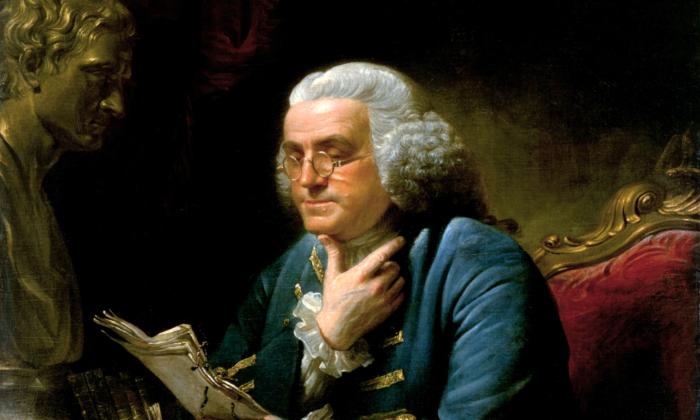Known to be blunt, impatient, and cantankerous, John Adams, second president of the United States, is not generally thought of as having a diplomat’s character. He had a quick temper and, at times, could be explosive. In spite of those flaws, he nevertheless scored major success as a diplomat in Europe at a very crucial time for America. Credit that to his bedrock principle of putting the public good first, and to his unwavering belief (with all of his heart, soul, mind, and strength) in the founding ideals of this country.
In September 1780, Congress designated Adams as minister plenipotentiary to the United Provinces of the Netherlands (The Dutch Republic) to negotiate a sizeable loan and a commercial trade treaty. At that crucial stage, the Thirteen Colonies were, for the most part, bankrupt. The Revolutionary War had been dragging on for years, but America had no public money to fund the war. In addition to a quick loan, the Colonies desperately needed a foreign source of trade and commerce. The war had totally curtailed the traditional trade with Britain, and economies throughout the Colonies contracted sharply from 1776 onward.
Immovable Objects
Upon Adams’ arrival there, he decided to locate in Amsterdam, where he could meet and speak with bankers. Nevertheless, it did not take him long to run into difficulties. He had in his possession letters of introduction from the President of Congress, Samuel Huntington, intended for the States-General (the representative body) and the Stadtholder (the chief magistrate). The letters were not accepted because the United States did not have diplomatic recognition from the Dutch Republic. America was still universally regarded technically as a group of disgruntled English colonies.In order to get a loan from the Dutch, much less a commercial treaty, the upstart nation first had to receive diplomatic recognition as an independent country. The chances of obtaining that were quite slim. First of all, the Stadtholder, William V, was a staunch Anglophile and a direct cousin of George III, king of England. Second, the States-General insisted upon neutrality in the ongoing war between Britain and America, even though they were facing pressure from the English and the French to commit one way or the other. Third, as a people, the Dutch were painstakingly cautious and contemplative. None of this boded well for Adams. At one point he wrote, “They will deliberate and deliberate and deliberate!”
As the future president was to learn, all interests in Dutch society at the time were “implacably opposed to each other,” as the late poet and academic J.W. Schulte Nordholt (1920–1995) wrote. Politically, the division was among three groups: the Stadtholder and his supporters (the army, the established Church, and the lower classes); the growing, emerging middle class; and the local Regents. The Regents were republic-minded merchants in control of town-councils, the states, and the legislative body of the states, the States-General. The more progressive Regents referred to themselves as Dutch Patriots. According to Nordholt in his essay “John Adams and the Dutch Republic,” they constituted a “bourgeois-aristocratic uppercrust that was a splendid example of oligarchy.”
A Shift in Strategy
After this disappointment, Adams shifted his strategy and relocated to Leiden, a town outside of The Hague, where both the Stadtholder resided and the States-General convened. He remained there several weeks and in subsequent months made many trips between Amsterdam and The Hague. Employing a mixture of his hallmark impatience, his American pluck, and a large amount of his self-sacrificing principles, Adams set out to educate the Dutch and persuade decision-makers to favor giving his fledgling country diplomatic recognition. In short, he initiated his own marketing campaign.The first step he took was to write lengthy memorials addressed to the Stadtholder and the States-General. In the memorial to the States-General, according to editors of the digitized John Adams Papers published by the Massachusetts Historical Society, “Adams argued that if the Netherlands delayed recognizing the United States, it risked exclusion from the American market. Moreover, the failure of the American Revolution through lack of support from the Dutch and other Europeans raised the specter of a stronger and more voracious British empire.” Nevertheless, he encountered the same brick walls. The official Dutch response was no response.
Adams soon fell ill as a result. Being a heavy smoker and chewer of tobacco, and a moderate drinker, his body rebelled under prolonged stress. He was prone to depression, heartburn, and respiratory infections, and he possibly suffered from hyperthyroidism. He would later write of the period, “My Feet had well nigh Stumbled on the dark mountains.”
Surrender at Yorktown Turns the Tide
His press campaign for America no doubt had positive impact, but the tide changed very quickly after news arrived of the British surrender at Yorktown (October 18, 1781). Just as the 1777 surrender at Saratoga greatly influenced France, so the surrender at Yorktown greatly influenced the United Provinces. Dutch Patriots seized the moment to push diplomatic recognition for America through the separate States and in the States-General, too.In early 1782, Friesland was the first State to do so and was followed by the others. In April, the States-General officially gave national recognition by the Netherlands to the United States. It was just the second country to have done so (the first was France). With this new development, the loan and the commercial treaty for which Adams initially traveled to the Netherlands were forthcoming.
This article was originally published in American Essence magazine.





